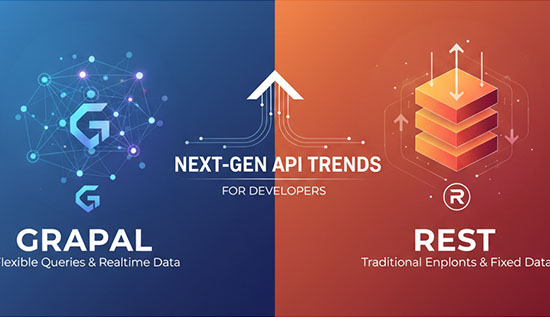Artificial Intelligence Implementation: A Roadmap to Success

Discover a detailed roadmap for artificial intelligence implementation, including strategies, tools, and frameworks and guides for successful AI integration.
Artificial intelligence (AI) has the potential to transform industries, streamline processes, and accelerate innovation. However, for organizations moving into AI, the problem is not only comprehending AI, but also efficiently utilizing it. A detailed plan, robust tools, and a strategic approach customized to the organization's specific demands are all required for successful artificial intelligence implementation.
In this article, we'll lead you through the major aspects of AI implementation, including creating an AI implementation plan, choosing the correct tools, and developing a good AI implementation strategy.
Understanding Artificial Intelligence Implementation
Artificial intelligence implementation refers to the process of incorporating AI technology and systems into existing corporate operations. This entails using machine learning implementation, data analytics, and automation to develop smarter workflows, make data-driven decisions, and improve user experience.
Businesses that follow a systematic AI implementation roadmap can leverage the benefits of AI while avoiding risks and resource costs. This guide will provide you with a comprehensive framework for moving from planning to implementing an effective, scalable AI solution.
Benefits of AI Implementation in Business

Implementing AI provides various benefits to businesses across industries:
- Enhanced Efficiency: Artificial intelligence automates monotonous activities, freeing up staff for higher-value work.
- Better Decision-Making: AI analyzes massive volumes of data in real time, producing actionable insights.
- Personalization: AI-powered personalization improves consumer experience and satisfaction.
- Cost Reduction: Automation and streamlined procedures lower operational expenses.
Whether you work in healthcare, finance, or retail, Implementation of artificial intelligence can provide you with a competitive advantage and long-term success.
Step 1: Setting Clear Goals for Implementation of Artificial Intelligence
Establishing clear goals is the foundation of a successful AI implementation strategy. Begin by establishing what you hope to achieve with AI in the short and long term.
How to Set AI Goals:
- Identify Business Objectives: Define objectives such as increasing productivity, improving customer service, and lowering expenses.
- Evaluate AI Readiness: To establish AI deployment readiness, assess existing infrastructure and data quality.
- Set success metrics: Define key performance indicators (KPIs), such as reduced processing time, enhanced accuracy, or increased income.
By creating precise, quantifiable goals, you can ensure that your AI implementation remains in line with business objectives.
Step 2: Identifying Suitable AI Use Cases
The next step in implementation of artificial intelligence is to find the appropriate use cases. Not every process or activity will benefit from AI, therefore careful consideration is required.
Popular AI Use Cases:
- Customer service: chatbots, voice assistants, and automated response systems.
- Predictive Maintenance: In manufacturing, AI-powered predictive maintenance lowers downtime.
- Personalized Marketing: Analyzing client data to make individualized recommendations.
- Fraud Detection: Artificial intelligence models can detect suspicious activity in financial services in real time.
Choose use cases where AI can add considerable value, have demonstrable impact, and align with business objectives.
Step 3: Building an AI Implementation Plan and Framework
A well-defined AI implementation plan guarantees that each step of the project has specific goals, timetables, and resource allocations. An AI implementation framework gives your team a structure to follow.
Key Components of an AI Implementation strategy:
- Project Scope: Define the project's scope, objectives, and timeline.
- Budgeting and Resources: Allocate funds for data, software, and experienced workers.
- Risk assessment: identifying potential issues, such as data privacy or system integration.
- Governance and Compliance: Ensure that AI meets regulatory criteria, particularly in sensitive industries such as healthcare and finance.
This AI implementation framework functions as a step-by-step guide, providing insight into each stage of the AI implementation roadmap.
Step 4: Selecting Artificial Intelligence Implementation Tools and Technology
The tools you choose will have a significant impact on the success of your artificial intelligence implementation tools. These tools differ depending on your aims and the complexity of the AI solution.
Key AI Implementation Tools:
- Data Processing Tools: Big data processing tools include Apache Hadoop and Spark.
- Machine learning platforms: TensorFlow, PyTorch, and AWS SageMaker.
- Visualization tools: Tableau and Power BI for interpreting and visualizing results.
- Automation tools: UiPath and Blue Prism for robotic process automation (RPA).
Selecting the appropriate tools is crucial to ensuring that your AI solution is scalable, efficient, and compatible with your existing systems.
Step 5: Developing and Training Machine Learning Models
machine learning implementation models are created by collecting high-quality data, preparing it, and selecting relevant algorithms. This is one of the most difficult stages of AI implementation, yet it is critical for developing strong, effective AI solutions.
Read More: Advantages and Disadvantages of Machine Learning
Key Steps in Model Development:
- Data Collection: Collect and sanitize relevant data.
- Feature engineering: selecting and transforming variables to improve model performance.
- Algorithm Selection: Choose algorithms that are appropriate for your aims, such as neural networks for image processing or decision trees for categorization.
- Model Training: Develop and validate models to ensure correctness and reliability.
To ensure that AI models function successfully in real-world circumstances, they must be developed continuously through iteration, testing, and refining.
Step 6: Deploying and Monitoring AI Solutions
When the machine learning implementation models are complete, they are ready for deployment in production systems. The deployment should be carefully managed to avoid disruption and verify the model's functionality meets business requirements.
Best Practices for Deployment:
- Continuous Monitoring: Set up monitoring tools to track model performance.
- Regular Updates: As additional data is collected, update the models to increase their accuracy.
- Error Tracking: Set up notifications to detect AI faults or abnormalities.
Effective deployment and monitoring are critical for maintaining the performance of your AI implementation over time.
Step 7: Scaling and Optimizing AI Implementation
Scaling entails adapting AI technology to function across a larger enterprise. As the scale grows, optimizing AI models and procedures becomes increasingly important for efficiency.
How to Scale AI Effectively:
- Automate Retraining: To keep models accurate, retrain them on a regular basis with new data.
- Integrate with Business Functions: Work with other departments to increase AI's influence across the organization.
- Improve Data Collection: Increase data quality and availability to gain better insights and outcomes.
By scaling strategically, businesses can maximize the return on investment from AI implementation in business.
How to Implement AI in Your Business: A Practical Guide
Step-by-Step Guide to How to Implement AI Solutions
- Assess Organizational Readiness: Evaluate present capabilities, technology infrastructure, and personnel skills to identify areas for development.
- Create an AI-Ready Culture: Educate teams about the benefits and potential of AI to foster a positive environment for its deployment.
- Set Clear Objectives: Define your goals for AI to drive the solution's design and deployment.
- Select the Right Technologies: Choose tools and platforms that are aligned with your goals and can scale to meet future needs.
- Pilot programs: Begin with small-scale studies to assess AI's potential in your specific context.
- Scale Gradually: Based on the pilot results, plan for larger-scale deployment while evaluating effectiveness and resolving any difficulties that arise.
Read More: What is the Purpose of Prompt Engineering in Gen AI Systems
Conclusion
A clear strategy, meticulous preparation, and the appropriate tools and frameworks are required for a successful AI implementation. By following the steps provided in this roadmap, firms can decrease risks, optimize resources, and successfully employ AI to achieve strategic goals. As AI technology evolves, companies who engage in a thorough AI implementation strategy now will be better positioned to drive future innovation and preserve a competitive advantage.
Implementing AI is more than simply technology; it is about preparing your business for a smarter, data-driven future. With a solid plan, continual optimization, and continuing monitoring, AI may become a valuable asset in attaining long-term success.
Discover: Artificial Intelligence in Cambodia: Advancing Education and Security
FAQ
Q1: What is an artificial intelligence implementation framework?
A1: An artificial intelligence implementation framework is a systematic strategy to incorporating AI into corporate operations, including planning, development, deployment, and scaling.
Q2: How do I select AI implementation tools?
A2: The tools you choose are determined by your objectives, available resources, and functional requirements. Consider compatibility, scalability, and ease of use.
Q3: What are the main challenges of AI implementation?
A3: Data quality challenges, high costs, a lack of experience, and difficulty integrating AI with current systems are all obstacles.
Q4: How can I measure the success of AI implementation?
A4: Use KPIs that are relevant to your aims, such as better efficiency, cost savings, or improved customer satisfaction.
Read More: SAP Implementation and Its Different Methods
More Articles
 20 Nov 2025
20 Nov 2025
GraphQL vs REST: Next-Gen API Trends for Developers
Compare GraphQL vs REST to optimize API performance, scalability and modern application design with best practices for developers.
 20 Nov 2025
20 Nov 2025
Neural Network Programming Beyond Python: Rust & C++
Experience neural network programming beyond Python, powered by Rust and C++ ecosystems built for speed, safety, and large-scale deployment.
 19 Nov 2025
19 Nov 2025
Swarm Robotics in Agriculture & Logistics: Smart Automation
Swarm Robotics in Agriculture & Logistics enhances automation, efficiency, and smart coordination across modern farming and logistics operations.
 19 Nov 2025
19 Nov 2025
Ultra-Low Latency Networks for VR/AR: Optimized Performance
🚀 Discover how Ultra-Low Latency Networks for VR/AR are transforming real-time experiences with 5G, edge computing, and seamless data transmission.